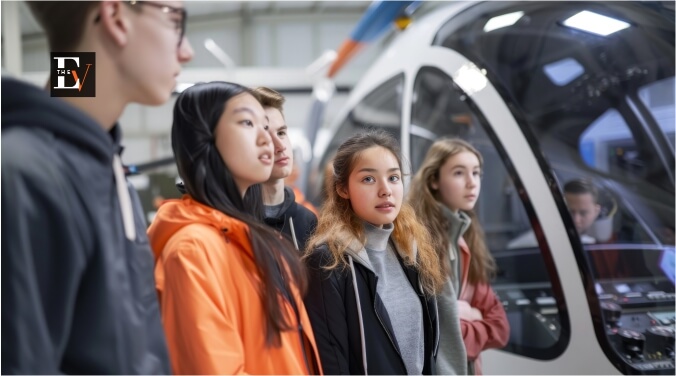Career-centric Learning
With the continually changing job market, traditional education models are being redefined to meet the demands of the modern workforce. The present student needs skills in practical applications and real-world exposure for students to achieve success in a career. In this wake, most of Asia’s high-profile schools have started taking industry partnerships to adapt to these changes in curriculum. This method allows the exposure of students to real-world problems, building skills and meaningful relationships with industry leaders while safely ensconced within a classroom.
A new concept is rising in relation to industry needs and academic programs is career-centric learning. Schools are increasingly collaborating with organizations in a wide range of sectors to provide hands-on experience, internships, mentoring, and projects to students that can directly connect them with their professional world. For example, technological firms partnering with engineering schools or healthcare institutions pairing with medical universities can thus form synergies that benefit the respective industries and students equally.
This is especially relevant for industry partnerships within school curricula for an Indian and broader Asian audience. Asia has now emerged as a global economic powerhouse, so there is a greater need than ever for a skilled workforce capable of contributing to diverse sectors like technology, healthcare, finance, and manufacturing.
- The Rise of Industry-Academia Collaborations in Asia
Asia has witnessed a rise, especially within industrial academic partnerships, over the last decade. From schools to universities all over Asia, these industrial academic collaborations bring much value in terms of the learning experience. Prestigious institutions like the National University of Singapore (NUS), the Indian Institutes of Technology (IITs) and Tsinghua University in China have all embraced this model.
In many of these institutions, industry partnerships are being integrated directly into the curriculum. Courses that are designed in consultation with industry experts reflect current market trends and emerging technologies or in-demand skills. For example, technology companies collaborate often with engineering and computer science departments to design courses aimed at coding, artificial intelligence and data analytics. This collaboration equips the students with relevant technical skills and at the same time, brings awareness about the industry-standard tools and practices to the students.
However, such partnerships tend to lead to internships, placements and research opportunities in which students are directly introduced to their future employers. Such collaborations have remodeled educational systems and frameworks across Asia. Schools today facilitate career launching and education.
- Benefits of Industry Integration for Students
One of the distinct benefits of integrating industry partnerships into college curricula is the practical exposure it gives college students. In traditional educational setups, students often graduate with a deep theoretical understanding of their field but restrained practical experience. By incorporating industry needs into the curriculum, students can work on real-world projects, resolve business challenges and apply their knowledge in tangible methods.
Internships and mentoring are also other fundamental opportunities. Within university-industry partnerships, the students can be afforded the opportunity for internships with market leaders so that they gain experience in a professional setup. They also benefit from the mentorship of industry leaders who provide guidance on how to navigate their career ladder, skill development and networking with professional connections. All these help them gain a high employability rate, confidence and competence to perform well in the workplace.
For example, an engineering student who has also worked as an intern with a global automotive company will graduate not only with theoretical knowledge but also with great experience in how engineering principles are applied to real designs and products. In exactly the same way, a business student collaborating on a marketing campaign with a multinational firm will emerge from their educational experience armed not only with theoretical knowledge but also with direct experience in how to navigate market dynamics.
- Building Stronger Schools through Industry Collaboration
Industry partnerships also strengthen the institutions themselves. Schools that partner with industry leaders can offer more relevant, up-to-date programs, so graduates have a good shot at getting jobs in a dynamic changing work environment. Industry partners often also provide funding, cutting-edge equipment, or even guest lecturers, which enriches the academic environment. This helps schools to be perceived as breeding grounds for innovation and research that can possibly solve real-world problems.
These collaborations therefore help the esteemed Asian schools promote their reputation. The collaborations improve the quality of their academic offerings and make them attractive to students. For example, students are more likely to apply to institutions that have a proven track record of providing industry placement, internship and live projects that will lead the graduates directly to employment.
- Challenges and Future Directions
Many advantages can be availed from incorporating industry partnerships in the curriculum, but it is surely not without its disadvantages. One of the largest challenges is ensuring the curriculum does not get too skewed towards focusing on either academic rigor or practical application. It needs to be balanced.
Overemphasizing industry requirements may result in an undue lowering of fundamentally important theoretical knowledge that one would need for long-term success. Schools must find the right equilibrium between satisfying industry demands and maintaining academic integrity.
Moreover, ensuring inclusivity in such programs is a must. Due to the fact that large firms give more value to high-end institutions, there is a potential that middle-scale institutions and students with less-known backgrounds may be left out in races of such kinds.
Conclusion
The industry partnerships embedded into Asia’s premium schools’ curricula will help change the way education in these countries responds to the needs of the market. Student industries provide students with the practical experience and mentorship they need to succeed in those future careers along with exposure to industry leaders.






